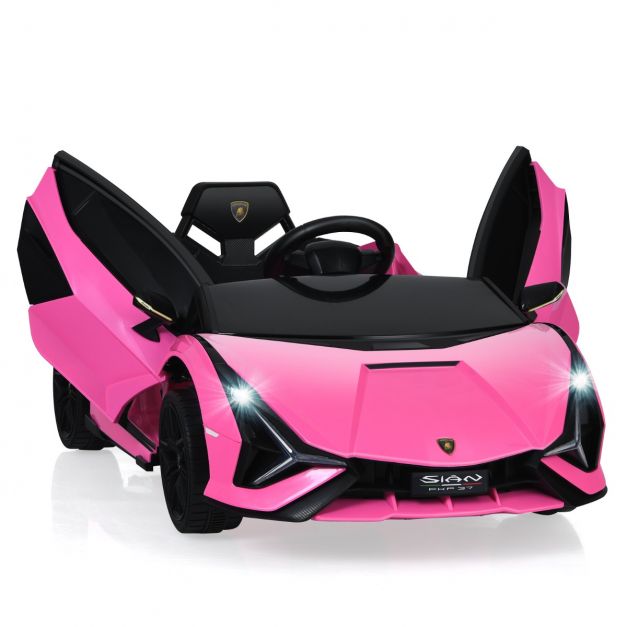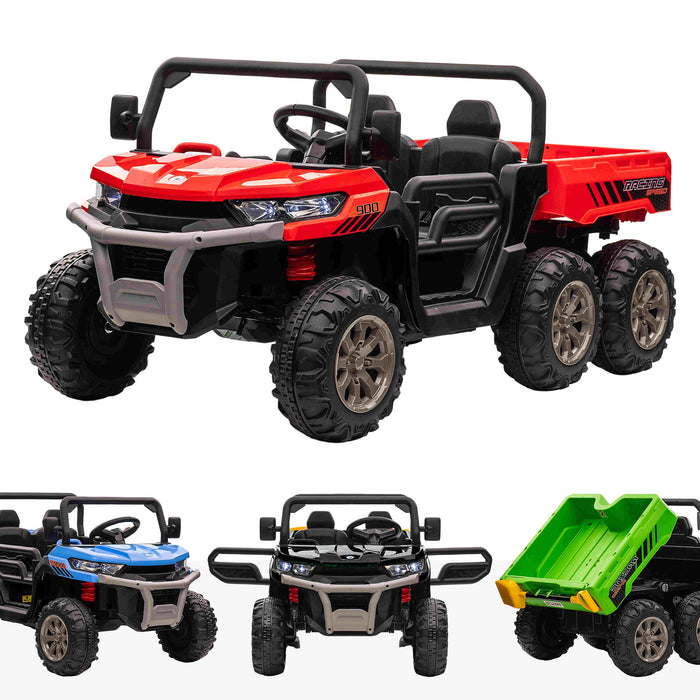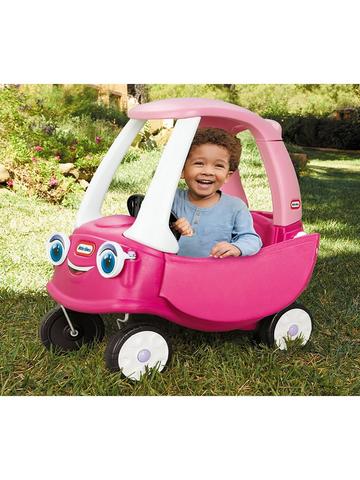Best Advice To Picking Remote Control Childrens Cars
Best Advice To Picking Remote Control Childrens Cars
Blog Article
What Do I Need Know About Battery Life & Charging Time For An Electric Kid's Car?
It is important to understand the battery life of your electric ride-on car for children and how long it takes to recharge. This will guarantee that you can play for hours without interruption. Here's what you need to know to know: Type of Battery
The majority of electronic ride-on cars for children utilize rechargeable batteries. They typically are lithium-ion batteries or lead acid batteries. Lead-acid batteries are slower to charge and have a shorter battery life.
Capacity of Battery -
The capacity of the battery, expressed in ampere-hours (Ah) or watt-hours (Wh) is the measure of how long the ride-on automobile can operate on a single charge. Batteries with higher capacity provide a longer playing time before requiring recharging.
Run Time -
The time of a car's runtime is how long the vehicle can run continuously on a single battery charge. It can be affected by a number of variables like battery capacity and motor speed, as well as the terrain and rider weight.
The run-time of electric ride-ons is between 30 and 2 hours. Some batteries with a high capacity can offer a longer run time.
Time to charge -
The charging time is how it takes for the battery to completely recharge once it's depleted. The time to charge is based on the charger specification capacity, battery capacity and charging method.
Charging times for electric ride on vehicles are usually between 8 and 12 hours. Certain models provide faster charging particularly those with lithium-ion batteries.
It's essential to follow the recommendations of the manufacturer for charging to ensure safety and longevity of the battery. The battery's overcharging or undercharging could alter its performance and extend its lifespan.
Charge Method -
Electric ride-on cars are often equipped with chargers which plug into a standard home outlet. Some models offer rapid charging or come with a clever charger that regulates the speed at which the battery is charged.
To prevent damage to the battery or electrical system, ensure that the charger as well as the port of the ride-on is compatible.
Additional Batteries
Certain electric ride-on vehicles might permit you to purchase additional batteries or spares for longer playing time. A supply of batteries allows you to switch out batteries that are depleted for fully charged ones, thus reducing downtime between play sessions.
Understanding the battery and charging time of a ride-on kid's car will help ensure that your child and you can enjoy uninterrupted and fun playtime as well as thrilling adventures. Using the correct charging techniques and charging the battery regularly will maximize battery life. Have a look at the recommended kids ride on cars for website recommendations including ride ons, toy ride, toy ride, remote control childrens car, ride electric car, pedal car, electric ride on cars, childs car toy, kiddies cars, kids electric cars and more. . 
What Assembly And Upkeep Requirements Are There For Children's Ride On Automobiles?
To ensure safety and durability To ensure safety and durability, the majority of ride-on cars for kids require assembly. Here are the most common assembly and maintenance requirements for kid's ride-on cars - - Assembly -
The majority of ride-on cars arrive partially assembled and need some assembly. This typically involves attaching components such as wheels as well as the seats, steering wheel and other components according to the specifications of the manufacturer.
Follow the assembly directions carefully to ensure that every component is correctly aligned and securely attached. Use the provided tools and hardware as directed to complete the assembly process.
Cleaning -
For the ride on car to appear its most attractive and function efficiently, regular maintenance is required. Use a soft, damp cloth with mild soap and water to clean the exterior surfaces.
Be aware of areas that are prone to build up such as tires wheels, undercarriage and the tire. Use a brush and toothbrush to scrub the areas that are difficult to reach.
Use of harsh chemicals, abrasive cleaners or high pressure water sprays may damage electronic or paint components on the ride-on cars.
Battery Care -
Care for your battery is vital when the ride-on is powered by rechargeable batteries. Proper battery care will maintain performance, and extend the battery's lifespan. Battery care is easy by following these tips.
Fully charge the battery prior to the first use, and then every time you use it to ensure that you get the maximum amount of runtime.
Overcharging the battery or keeping it in charge for prolonged periods of time can damage the battery and decrease its life span.
The battery in the car that is ride-on is best stored in a dry and cool space when not in use in direct sunlight or temperatures that are extreme.
The terminals of the battery should be inspected periodically for signs of corrosion and damage. They can also be cleaned using a wire bristle or terminal cleaner if required.
Replace the battery if it's not in charge or if you notice evidence of damage.
Tire Maintenance -
Check the tires regularly to find any indications like wear, damage or the loss of pressure. As needed, make use of a bicycle air pump or an air compressor to inflate tires to the appropriate pressure.
Check the tread pattern to see if there are any foreign objects or particles that could cause flats or punctures. Replace or repair damaged tires by removing any obstructions.
Lubricate wheel bearings and axles regularly to reduce friction and ensure smooth movement.
Occasional Replacements or Repairs
Cars that ride on may need repair or replacement of parts due to wear and tear or damages.
Watch out for indicators of malfunction or deterioration for unusual sounds, loss of power, or unusual behavior. You can consult the user's manual or call customer support to get help for troubleshooting or repair.
To avoid further damage, replace damaged or worn components as soon as you can to ensure security and function.
By following these maintenance and assembly guidelines, you can keep your child's ride-on vehicle in good condition and provide hours of fun, safe playtime for your child. Take a look at the top JCB ride on digger for blog recommendations including childs ride on car, ride of car, electric two seater cars, toy a car, toy with car, toy and car, toy cars toy car, childs ride on car, electric toy car, pedal car and more. . 
What Are The Different Types Of Remote Controlled Kids Cars? What Are The Pros And Cons Of These Cars?
The various sizes, styles price, styles, and models of remote-controlled cars for children are available to meet the requirements and budgets of everyone. Here's a listing of the different types of remote control cars for kids, with the dimensions, cost ranges as well as pros and cons.
Electric RC Cars – Remote-controlled electric cars that are powered by batteries. They can be used indoors and outdoors. The cars are available in various designs, including buggies and trucks.
Nitro RC Cars - Gas-powered remote-controlled vehicles that provide greater speeds and performance, however they require more maintenance and knowledge to run. They're generally bigger and more costly than electric RC car.
Scale Models: Remotely controlled replicas of real-life vehicles, such as cars planes, trucks, and boats. Scale models can be found in various scales ranging from 1-10 up to 1-24. The larger scales have more detail and realism.
Sizes -
Remote control kids' cars are available in various sizes. From micro-sized to full-scale replicas, they are available in a variety of dimensions and shapes. The size and weight of the car can affect its performance.
Micro-sized cars are small and light, and therefore ideal for indoor play and use by younger children. Larger-scale models offer more power and durability, making them ideal for outdoor racing and off-road driving.
Prices
Prices vary depending on the dimensions, features and the build quality.
The price of micro-sized electric RC vehicles can vary from $20 to $100. However, larger-scale electric or Nitro RC models are available between $100 and $500.
Models and high-end hobbies RC cars range from a few hundred dollars up to 1000 dollars, depending upon the amount of detail.
Pros and Cons
Pros -
Children and adults will enjoy endless hours of entertainment and fun with remote control cars.
Skill Development. Driving a RC car allows children to develop hand-eye-coordination as well as spatial awareness and problem-solving capabilities.
Social Interaction. RC cars encourage social interaction and be enjoyed by friends and families.
Aftermarket parts, upgrades, accessories and other items from the aftermarket are a great way to personalize many RC cars and increase their performance.
Cons
Cost – A remote-controlled car for children that has advanced features or hobby quality models can cost quite a bit.
Learning Curve - Controlling an RC car requires a lot of practice and skills, and young youngsters may have difficulty when it comes to the controls at first.
Maintenance Regular maintenance is essential for RC vehicles, such as cleaning, lubrication, and repairs.
Safety issues Safety Issues RC vehicles could be hazardous if they are not operated responsibly under adult supervision. They may cause accidents, fall hazards and electrical dangers.
Remote control cars for children can be a fantastic educational and fun experience. But, it's essential to pick the correct model based on factors like dimensions, safety, cost and features. For older children, hobby-grade RC cars may be a better option. However, simpler models can also be a good option for children who are younger. Follow the top rated McLaren kids car for more recommendations including toy car for car, ride on car, cars pedal car, electric car ride, toy car toy car, electric ride along car, remote control childrens car, kidscars, car toy car toy, car for toy and more. .